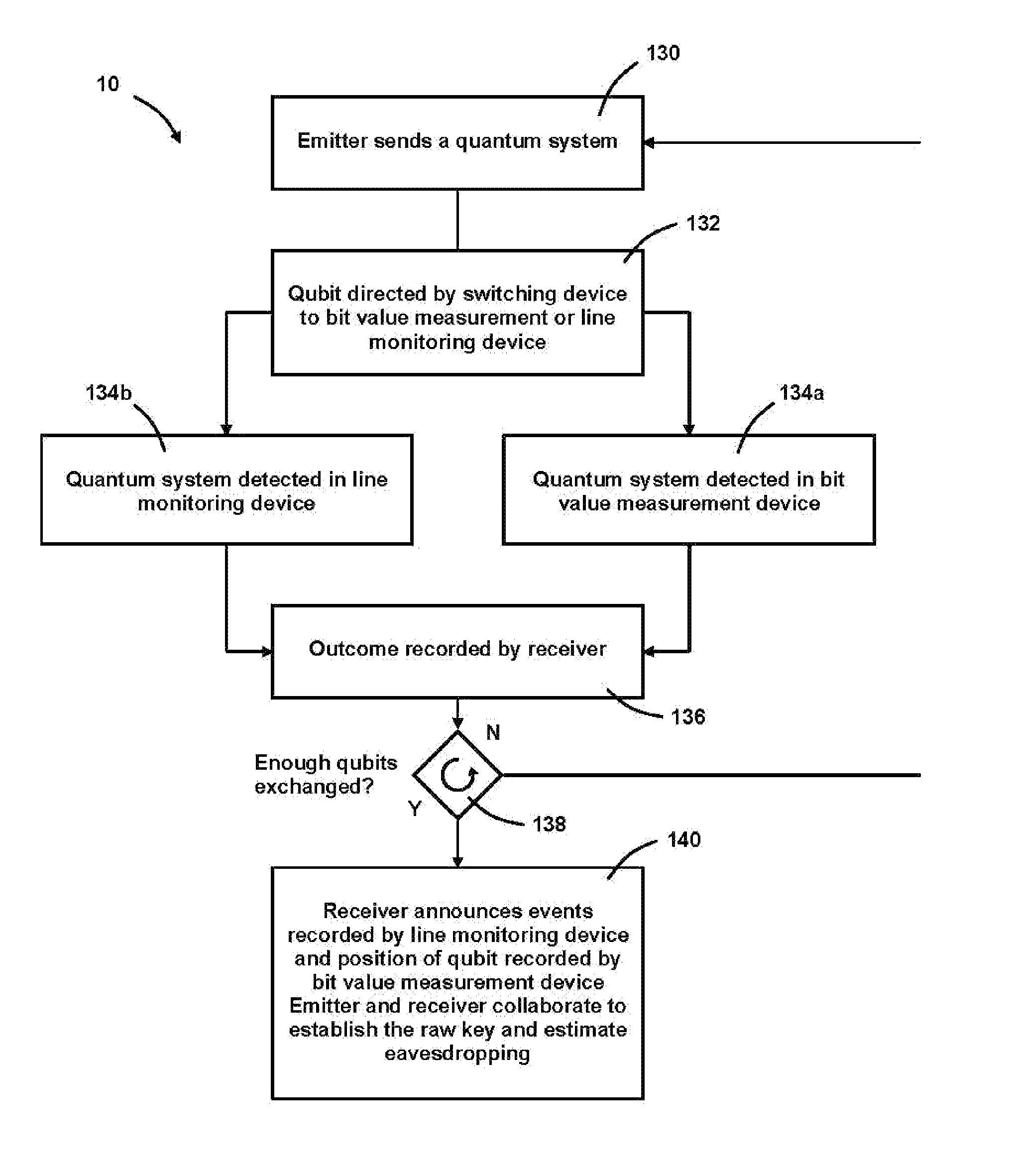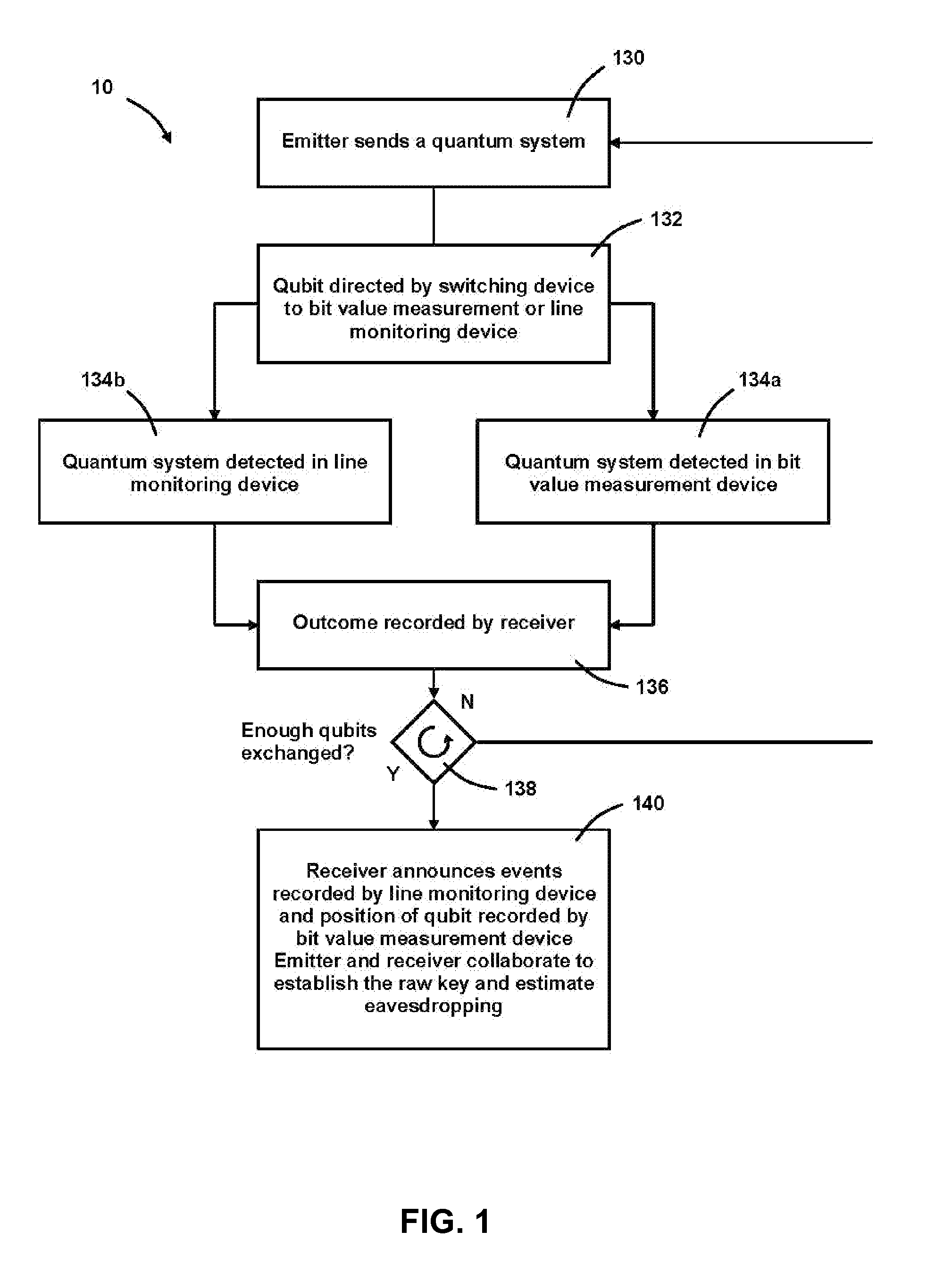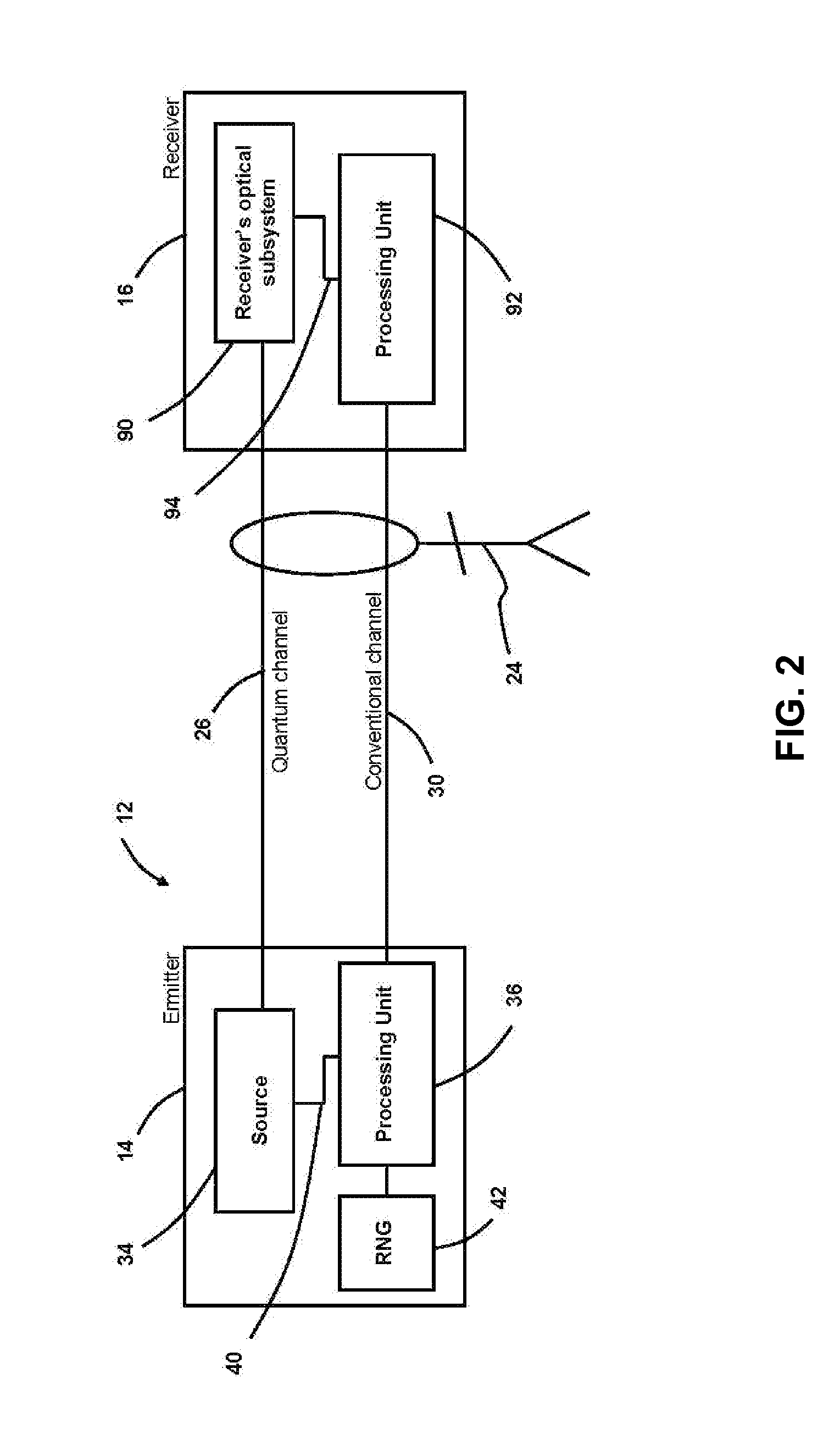Two non-orthogonal states quantum cryptography method and apparatus with inter-and inter-qubit interference for eavesdropper detection
a quantum cryptography and inter-qubit interference technology, applied in the field of quantum cryptography, can solve problems such as noticeable perturbation
- Summary
- Abstract
- Description
- Claims
- Application Information
AI Technical Summary
Benefits of technology
Problems solved by technology
Method used
Image
Examples
Embodiment Construction
[0027]Referring now to FIGS. 1 and 2, a method 10 and apparatus 12 are provided for exchanging between an emitter station 14 and a receiver station 16 a sequence of symbols coded on a stream 22 of quantum systems (i.e., qubits) 20, shown in FIG. 3, used to transmit the raw key (a data string such as 101100101001111001001010 . . . 01010100) and allowing the emitter station and the receiver station to estimate the maximum amount of information an eavesdropper 24 can have obtained on the raw key. This raw key can subsequently be distilled into a secure key (a distilled data string such as 10011000 . . . 1100 of fewer digits than the raw data string) through an appropriate key distillation procedure, known in the art.
[0028]The emitter station 14 and the receiver station 16 are connected by a quantum channel 26 and a conventional channel 30. The values of the symbols are encoded by preparing quantum systems in a particular quantum state, also known as a data state. The quantum systems ex...
PUM
 Login to View More
Login to View More Abstract
Description
Claims
Application Information
 Login to View More
Login to View More - R&D
- Intellectual Property
- Life Sciences
- Materials
- Tech Scout
- Unparalleled Data Quality
- Higher Quality Content
- 60% Fewer Hallucinations
Browse by: Latest US Patents, China's latest patents, Technical Efficacy Thesaurus, Application Domain, Technology Topic, Popular Technical Reports.
© 2025 PatSnap. All rights reserved.Legal|Privacy policy|Modern Slavery Act Transparency Statement|Sitemap|About US| Contact US: help@patsnap.com



